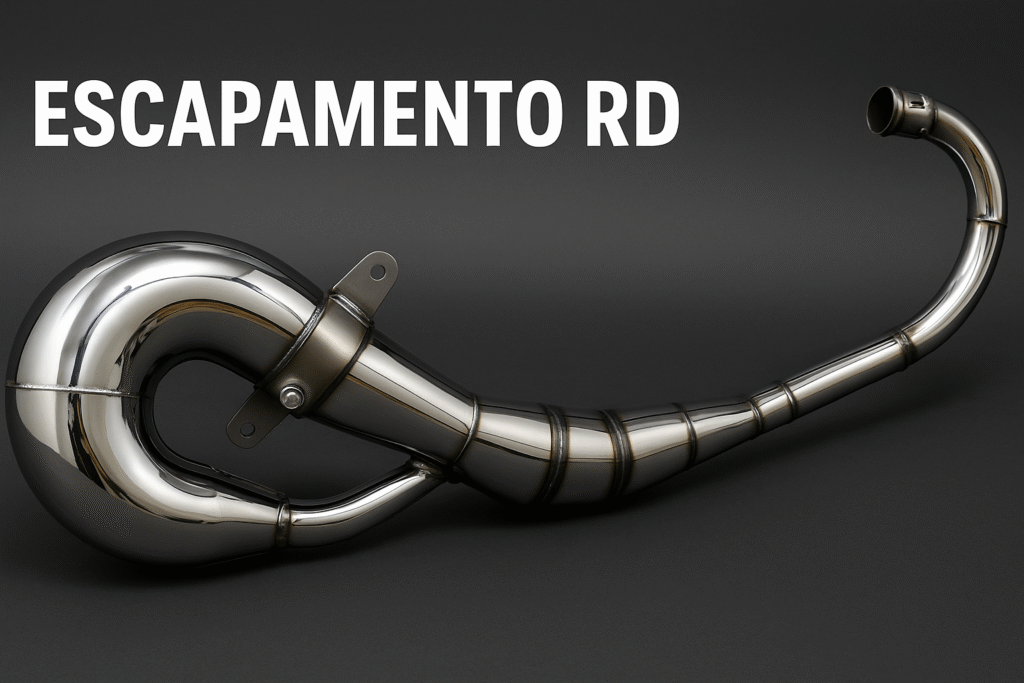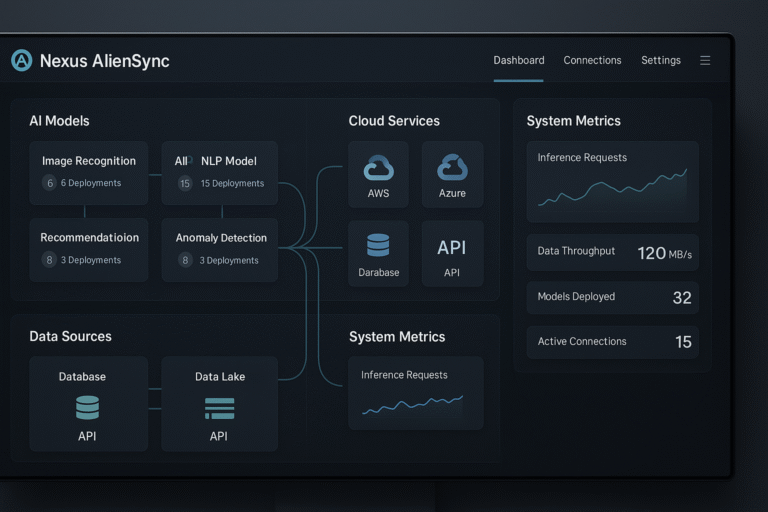
Escapamento RD
Introduction
Have you ever heard the raw howl of a two-stroke engine and wondered what makes it roar like that? That sound often starts with the escapamento RD—the custom exhaust system tuned for the iconic Yamaha RD-series motorcycles. Whether you’re a rider, a restorer, or just curious about motorcycle performance, this guide walks you through everything you need: from what an escapamento RD is, to how it affects performance, to how you pick, install and maintain one in 2025. We’ll cover:
- What is escapamento RD and why it matters
- How it works and what benefits it delivers
- How to choose, install and care for one
So buckle up—let’s get into the heart of two-stroke performance and exhaust tuning 🚀
What is an Escapamento RD?
What does the term mean and why is it special?
The expression “escapamento” simply means “exhaust” in Portuguese, while “RD” is the label used for Yamaha’s two-stroke “Race Developed” models. Thus, escapamento RD refers to the exhaust systems built or tuned for Yamaha’s RD-series motorcycles. In practice, that means systems tailored for two-stroke dynamics—packaging performance, sound and style.
Highlights:
- Designed for two-stroke airflow and pressure waves
- Often has “expansion chambers” rather than straight pipes
- Found on models like the RD125, RD135, RD350.
- Appearance and sound are part of its appeal, not just performance
Why Should You Care? (Performance & Sound Benefits)
How does an escapamento RD make a difference?
If you ride or own one of these RD bikes, upgrading or maintaining the right exhaust can bring real gains. Here’s what changes:
Performance gains
- Improved engine breathing: two-stroke engines rely heavily on exhaust design, as the chamber shape helps pull unburned mixture back into the cylinder.
- Better throttle response and higher rev capability: many riders report sharper acceleration after switching.
- Weight reduction: aftermarket RD-style exhausts often use lighter materials (stainless/titanium) so the bike responds more agilely.
Sound & style
- That signature two-stroke “high-pitched growl” comes from the tuned exhaust. The escapamento RD system contributes significantly to the tone riders love
- Visual appeal: chrome or polished pipes, visible expansion chambers—these enhance the bike’s look.
Why it matters in 2025
- With vintage two-stroke bikes gaining collector status, having a correct or well-tuned escapamento RD can boost value.
- Modern riders seek the nostalgia of two-stroke sound combined with improved materials and build quality.
OEM vs Aftermarket vs Custom Escapamento RD
What are your options and how to pick?
When choosing an exhaust for your Yamaha RD bike, you’ll generally see three paths:
| Option | Description | Pros | Things to watch |
|---|---|---|---|
| OEM (Original Equipment) | Factory-made exhaust matched for your RD model | Maintains authenticity, value | May be heavier, less performance lift |
| Aftermarket | Built by third-party manufacturers tuned for performance | More power, lighter, better sound | Fitment, legality, tuning required |
| Custom/Built-to-Fit | Fully bespoke system tailored to you and bike | Best personalization, sound & spec | Cost, time, fabrication and tuning |
Based on sources:
- OEM systems keep the bike “true‐to‐original” and are best for collectors.
- Aftermarket systems advertise better airflow, lighter weight and sport sound for riders who ride hard.
- Custom systems go further: unique pipe lengths, chamber shapes and materials—ideal for track or show bikes.
How to decide?
- Identify your goal: restore original, enhance performance, or custom build for show.
- Confirm compatibility: model, year, mounting, heat shields.
- Consider noise/emissions regulations in your area (two-stroke bikes may face stricter rules).
- Budget for tuning: especially for performance systems, you may need carburetion or reed valve adjustments.
Next Step: Choose your category, list your budget and compatibility, and track down credible vendors or local specialists who know two-stroke RD bikes.
Installation & Tuning Tips for Escapamento RD
Step-by-step guidance to get it right
Getting an escapamento RD installed properly will make or break the benefits. Here’s how to approach it:
- Remove the old exhaust system: Make sure all bolts, hangers, heat shields are safely removed.
- Check the header and flanges: Clean mating surfaces, replace gaskets if needed.
- Fit the new exhaust: Mount loosely at first, adjust hangers so no contact with frame or swing-arm.
- Tighten and check clearance: Once aligned, torque bolts and confirm pipe clearance from bodywork.
- Tune the engine: After installing an aftermarket or custom system, adjust the carburetor mixture/jetting and ignition timing if applicable. Two-stroke engines are sensitive to exhaust changes.
- Break-in or run-in period: Many performance pipes require a short run-in period at moderate throttle to seat properly.
- Heat shielding & protective wrap: Consider exhaust wrap or shields especially if the new system uses uncoated material and runs hotter.
Maintenance tips
- Inspect mounting brackets and rubber mounts every few rides—vibrations can loosen them.
- Check the silencer or baffle packing—two-stroke noise can be high, and over time the packing may degrade.
- Clean or remove carbon build-up at the expansion chamber, especially if you ride aggressively or mix oil.
Next Step: Use a torque chart specific to your Yamaha RD model, and schedule a carburetor check after about 100 miles of use for optimum performance.
Common Mistakes & How to Avoid Them
What to watch out for so you don’t lose gains
Upgrading to the right escapamento RD is only half the job—avoiding pitfalls is equally important.
- Incorrect fitment: A mismatched exhaust may clear parts incorrectly, rub the frame, or cause leaks. Always verify model/year compatibility.
- Poor tuning post-install: A new exhaust can push your engine lean or rich if jetting isn’t adjusted—risking power loss or engine damage.
- Neglecting heat management: Aftermarket pipes may run hotter; failing to shield or wrap can damage plastics or rider gear.
- Overlooking legal/sound limits: In some regions, two-stroke bikes with aggressive exhausts may fail noise or emissions checks.
- Chasing style at the cost of reliability: Some custom or ultra-light systems cut corners in material thickness—may look great but wear out faster.
By acknowledging these mistakes and planning accordingly, you’ll unlock the full benefit of your escapamento RD while keeping your bike safe and compliant.
Next Step: Before purchase, check user forums for your RD model (e.g., RD135, RD350) and see real rider feedback about specific exhausts and fit issues.

Real-World Examples & Rider Feedback
What riders are actually saying in 2025
As of October 2025, forums and blogs highlight consistent themes:
- Riders of Yamaha RD135/125 are seeing improved mid-range torque using performance escapamento RD systems.
- Many vendors in Brazil (a strong two-stroke market) are offering dimensioned “escapamento RD” pipes for RD135Z and similar models.
- Some newer articles note that the classic sound of the RD’s two-stroke engine is a big part of the appeal—and a properly tuned escapamento RD is essential to that.
Quick rider feedback summary:
- “Faster pickup off the line, especially when using the tuned chamber.”
- “Love the sound, but had to rejet the carburetor after installation to avoid fouling plugs.”
- “Weight went down ~3 kg compared to stock; handling feels sharper.”
These real-life results show that if the installation and tuning are done right, the escapamento RD isn’t just hype—it delivers noticeable change.
Next Step: If you are in a country with active RD communities (e.g., Brazil, UK classic bike clubs), reach out and ask riders what pipe and tuning they used—it’s invaluable.
Future Trends & What’s Next for Escapamento RD
Where the technology and market are headed
While the escapamento RD is rooted in classic two-stroke design, a few trends are shaping its future:
- Material upgrades: More systems now use titanium or thin-wall stainless steel for maximum strength and minimal weight.
- Emissions compliance: Even two-stroke bikes are being retrofitted with catalytic or coated systems to meet stricter regulations.
- Modular designs: Some manufacturers offer interchangeable muffler sections or modular chambers so riders can tune sound or power.
- Digital tuning aids: With ECU add-ons and digital carb setups, it’s easier to fine-tune the engine to match the exhaust changes.
- Custom aesthetic + heritage fusion: Builders are creating exhausts that look vintage but incorporate modern manufacturing—helping classic RD bikes stay relevant.
In short, while the motorcycle itself may be from an earlier era, the escapamento RD ecosystem is very much alive and evolving.
Conclusion
The escapamento RD is more than just a fancy exhaust pipe—it’s a key component of the legendary Yamaha RD experience. It affects how your bike breathes, sounds and feels. Whether you’re restoring an RD125 or tuning a RD350, choosing the right exhaust, installing it properly and tuning your engine makes a big difference. Follow the steps above and you’ll unlock more power, more sound, and more ride pleasure. Ready for that next ride? Update your exhaust, tune it up—and let your RD roar.
Try it today and feel the difference.
FAQs
Q1: Can I install an escapamento RD on any motorcycle model?
A1: No—escapamento RD systems are specifically designed for Yamaha RD-series bikes with two-stroke engines. Compatibility (mounting, header length, expansion chamber shape) is crucial.
Q2: Will upgrading to an aftermarket escapamento RD void my warranty or fail emissions tests?
A2: If your bike is still under manufacturer warranty (rare for older RD models) or under region-specific emission laws, yes it’s possible. Always check local regulations and whether modifications are permitted.
Q3: How much performance gain can I expect from a well-tuned escapamento RD?
A3: Gains vary by model and tuning. Typical improvements include sharper throttle response, improved mid-range torque, and reduced weight. But the exact horsepower gain depends on many factors (engine condition, carb setup, etc.).
Q4: How often do I need to tune or service the exhaust system?
A4: Inspect mounting and clearances every few rides. If you’ve installed an aftermarket system, plan to check and adjust carburetion after ~100 miles. If you ride aggressively or in dusty conditions, inspect carbon build up at the chamber every 1-2 seasons.
Q5: I want a vintage look but modern sound—what’s the best approach?
A5: Choose an escapamento RD system with polished chamber and silencer (vintage-style) but with modern materials (thin wall steel, stainless) and an adjustable baffle. Then fine-tune the engine to balance sound, power and reliability.
Q6: Are there legal issues with loud two-stroke exhausts?
A6: Yes, many regions have noise or emissions standards that can affect two-stroke bikes. Before installing a louder or high-performance escapamento RD, check local laws so you don’t risk fines or forcing removal.
Q7: What’s the difference between RD125, RD135, RD350 models when choosing an exhaust?
A7: Each model has different engine size, chamber tuning, and header lengths. An escapamento RD must match those parameters—e.g., the RD135 may need a different pipe length or chamber volume than a RD350 to optimize performance properly
You May Also Like To read Click Here: Finding the Best Auto Body Shop Near Me: Your Ultimate Guide



